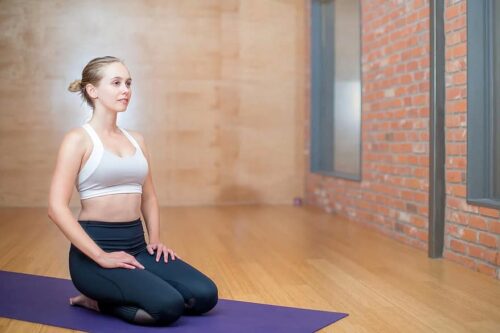In our quest for wellness, we often overlook the gentle power of Mother Nature. Scoliosis, a condition marked by the twisting and curvature of the spine, not only affects the body but also touches the soul, challenging one’s comfort and lifestyle.
While modern medicine provides a spectrum of treatments treat adult scoliosis and spinal surgery, like spinal fusion, there’s a growing interest in the holistic embrace of herbal remedies for scoliosis. This article is your gateway to understanding how these natural wonders can offer solace and support in managing scoliosis. From the leafy whispers of ancient forests to the hushed secrets of herbalists, we’re about to unravel the mysteries of herbal remedies that have been aiding spinal health for centuries.
Let’s discover how these botanicals can weave their healing magic into the tapestry of scoliosis care.
 Source: pexels.com
Source: pexels.com
Understanding Scoliosis
Scoliosis, a complex spinal condition, manifests as a three-dimensional deformity characterized by a sideways spinal curvature, and rotation of the spine. This condition, often identified during adolescence, can vary greatly in severity and impact. While some individuals experience minimal discomfort, others face significant physical challenges, including:
- Pain
- Reduced mobility
- In severe cases, impacts heart and lung function
Scoliosis is not merely a physical condition; it also affects an individual’s emotional and psychological health. Living with scoliosis involves navigating a range of experiences, from self-consciousness about physical appearance to coping with chronic discomfort.
The cause of scoliosis can be multifactorial, encompassing genetic, environmental, and developmental factors.
In terms of treatment, options range from observation in mild cases to bracing, which aims to halt progression in growing individuals. In more severe instances, surgical intervention by an orthopedic surgeon may be considered to correct and stabilize the spine. However, these conventional treatments, while effective, often lead to a quest for complementary approaches that can provide holistic relief and improved quality of life.
Popular Herbs For Scoliosis
Herbal remedies have been a cornerstone in the management of various health conditions, such as scoliosis treatment. Certain herbs are known for their properties that can aid in alleviating symptoms associated with scoliosis:
- Turmeric: Known for its anti-inflammatory properties, turmeric contains curcumin, which can help reduce pain and inflammation, common in scoliosis sufferers.
- Ginger: Another powerful anti-inflammatory herb, ginger can help manage pain and improve mobility.
- Willow Bark: Often referred to as ‘nature’s aspirin,’ willow bark has been used for centuries to treat scoliosis pain and inflammation.
- Boswellia: Known for its potent anti-inflammatory effects, Boswellia can be beneficial in managing the chronic pain associated with scoliosis.
- Devil’s Claw: Traditionally used for various pain conditions, the devil’s claw can help reduce discomfort and improve the quality of life in scoliosis patients.
- Chamomile: Popularly known for its calming properties. Chamomile helps in muscle relaxation. It can also alleviate stress and tension.
Note that these herbs are not a cure for scoliosis. But you can use them to complement traditional treatments. These herbs help ease symptoms and improve overall well-being.
 Source: pexels.com
Source: pexels.com
Scientific Evidence Supporting Herbal Remedies
The exploration of herbal remedies in the context of scoliosis is an evolving field. Many scientific studies shed light on the potential benefits and efficacy of herbs:
- Turmeric Studies: Curcumin, the active component in turmeric, can reduce inflammation. This is key in managing scoliosis-related pain.
- Ginger Research: Clinical studies have validated ginger’s role in pain relief, with its compounds showing effects similar to conventional pain relievers.
- Willow Bark Effectiveness: Several studies have compared willow bark extract to conventional pain relievers, finding it effective in reducing back pain, which is a common symptom in scoliosis patients.
- Boswellia and Inflammation: Boswellia can inhibit pro-inflammatory markers. Studies suggest it is a promising adjunct in managing scoliosis symptoms.
These studies offer promising insights. You need to approach herbal remedies with an informed and cautious perspective. Consulting healthcare professionals and considering individual health profiles are essential. This way, you can integrate these natural remedies into scoliosis management.
How To Incorporate Herbs Into Daily Life
Incorporating herbal remedies into daily life for scoliosis pain management requires a thoughtful and personalized approach. Here are ways to integrate these natural healers into your routine:
- Herbal Teas: One of the simplest ways to consume beneficial herbs is through teas. For instance, ginger or chamomile tea can be a soothing addition to your daily regimen. Steeping the herbs in hot water releases their active compounds.
- Tinctures And Extracts: More concentrated than teas, tinctures and extracts allow for easy dosage control. Herbs like turmeric and devil’s claw can be taken in this form, often diluted in water or another liquid.
- Topical Applications: Some herbs can be applied directly to the skin. Willow bark, for example, can be found in creams or salves for localized pain relief. The direct application can provide targeted support to areas affected by scoliosis
- Capsules And Supplements: Many herbs are available in capsule form, providing a convenient and controlled way to incorporate them into your daily health regimen. This method is particularly useful for herbs that might not have a pleasant taste.
- Culinary Uses: Incorporating herbs into your healthy diet and vitamin d is not only beneficial for health but also enhances the flavor of your meals. Turmeric, for example, can be added to curries, soups, or even smoothies as a form of nutrient therapies.
Mindful Integration
It’s important to integrate herbs mindfully, considering factors like:
- Existing health conditions
- Potential interactions with other medications
- Recommended dosages
Consulting with a healthcare professional, particularly one knowledgeable about herbal medicine, is advisable.
Listening To Your Body
Pay attention to how your body responds to these herbal remedies. Adjustments in dosages or methods of consumption in treating scoliosis might be necessary based on your experiences and outcomes.
Complementary Therapies With Herbs
Herbal remedies, when combined with other complementary therapies and non drug nutrient therapies, can create a synergistic effect that may enhance overall well-being and aid in managing scoliosis more effectively:
 Source: pexels.com
Source: pexels.com
Yoga And Herbs
As a form of scoliosis exercises, combining yoga, known for its spine-strengthening and flexibility-enhancing benefits, with anti-inflammatory herbs like turmeric and ginger can create a holistic approach to scoliosis progression.
Acupuncture And Herbal Medicine
Acupuncture, a key component of Traditional Chinese Medicine, can be paired with Chinese herbs to address the energy imbalances and physical symptoms associated with scoliosis.
Massage Therapy With Herbal Oils
Using herbal-infused oils in massage therapy can provide both the physical benefits of massage and the therapeutic properties of herbs. Oils infused with anti-inflammatory herbs can be particularly beneficial.
Aromatherapy
The use of essential oils, such as chamomile or lavender, in aromatherapy can help reduce stress and anxiety levels, which is beneficial for people with scoliosis, especially those experiencing pain and discomfort.
Physical Therapy And Herbal Support
Physical therapy exercises designed for scoliosis, such as having proper chiropractic care can be more effective when combined with herbal supplements that support muscle, support bone health, and reduce inflammation in order to prevent degenerative scoliosis.
Mindfulness And Meditation
Integrating mindfulness and meditation practices with a balanced diet can enhance the stress-relieving benefits of calming herbs like chamomile, when it comes to managing adolescent idiopathic scoliosis and promoting overall mental and physical well-being.
By combining herbal remedies with these complementary therapies, individuals with scoliosis can create a well-rounded, holistic treatment plan that addresses both the physical and emotional aspects of the condition. It’s important to approach surgical treatment using this integrative method with guidance from healthcare professionals to ensure safety and effectiveness.
Potential Risks And Considerations
While herbal remedies offer a natural approach to scoliosis management, they come with potential risks and considerations:
- Interactions with Medications: Herbs can interact with prescription medications, potentially leading to health risks. For example, ginger might affect blood thinners.
- Side Effects: Herbs can cause side effects like allergies, gastrointestinal issues, or headaches. Individual responses to herbs can vary.
- Quality And Purity: The herbal supplement industry is less regulated, leading to variations in product quality and purity. Choosing reputable brands is crucial.
- Dosage Concerns: Correct dosing is vital, as overdosing can lead to adverse effects. Dosages may vary based on individual factors like age and weight.
- Underlying Health Conditions: Those with pre-existing conditions, especially liver or kidney issues, should be cautious. Some herbs can exacerbate these conditions.
- Pregnancy And Breastfeeding: Many herbs are not recommended during pregnancy or breastfeeding. Consulting healthcare professionals is essential in these cases.
- Long-Term Use: The long-term effects of some herbal remedies are unknown. Periodic evaluation of their necessity and effectiveness is advisable.
- Combining Multiple Herbs: Using several herbs together can increase the risk of adverse interactions and side effects.
- Professional Guidance: It’s important to consult healthcare professionals experienced in herbal medicine for personalized advice, especially when integrating herbs with conventional treatments.
In essence, while herbal remedies can complement scoliosis care, informed caution and professional guidance are key to their safe and effective use.
To Wrap Up
As we reach the end of our verdant journey, it’s clear that herbal remedies offer more than just physical relief for scoliosis; they provide a connection to a time-honored tradition of natural healing. While the scientific world continues to explore and validate the efficacy of these herbal wonders, their role in complementing conventional treatments to correct scoliosis is undeniably promising.
By embracing these natural allies, individuals with scoliosis can discover a path to holistic wellness, one that balances the wisdom of nature with the advancements of modern medicine. It’s a journey of self-discovery, empowerment, and harmony with the natural world. As we continue to explore and respect the gifts of nature, let us remember that every herb, every leaf, has a story to tell: a story of healing, hope, and the enduring power of nature’s touch in our lives.
Frequently Asked Questions (FAQ)
How can I reduce scoliosis naturally?
What is the best vitamin for scoliosis?
What is the traditional treatment for scoliosis?
What foods are good for scoliosis?
What makes scoliosis worse?
What kind of massage is good for scoliosis?
Is coffee good for scoliosis?
What should I avoid if I have scoliosis?
Can scoliosis heal naturally?
What is the best exercise for scoliosis?
How do you stop scoliosis from getting worse?
How do you sleep with scoliosis?
Does hot water help scoliosis?
What is the best sitting position for scoliosis?
How can I straighten my spine at home for scoliosis?
 Source:
Source:  Source:
Source:  Source:
Source: 













